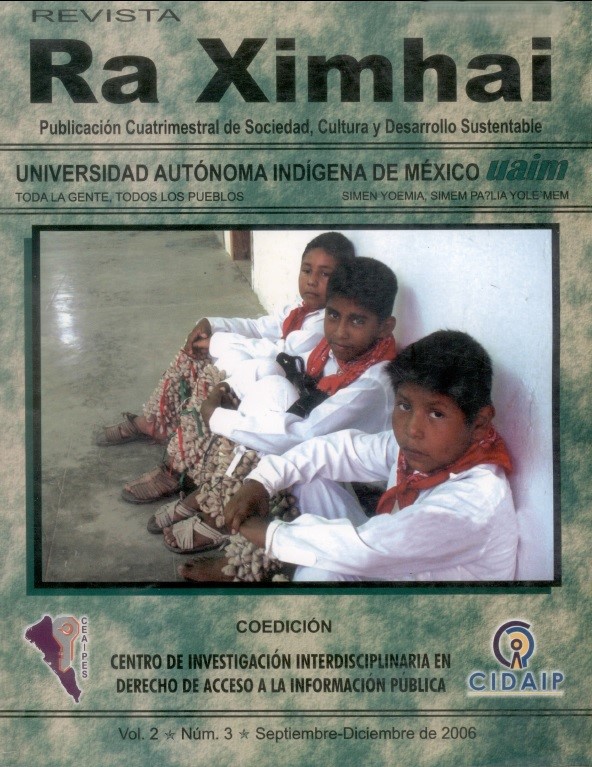Aquaculture as a development strategy for coastal and rural areas in Mexico
DOI:
https://doi.org/10.35197/rx.02.03.2006.11.amAbstract
Aquaculture is one of the food-producing activities that has been recording growth rates of 9-10% annually worldwide, a rate far higher than the production of other competing or substitute meat products such as beef, chicken or pork, which on average reach growth rates of less than 3.0%. While all these aquaculture growths are taking place in countries as far away as China, in countries such as Costa Rica, Honduras, Brazil and Chile, the trends are similar. On the other hand, the aquaculture activity that is taking place in Mexico has not found its virtuous course. On the one hand, fish production in the natural environment, which reached 1.5 million tons in the 80s, has not grown. On the contrary, its trend is towards decrease. And, as regards aquaculture, both in fresh and marine waters, it is stagnant due to the fact that the responsible government institutions, as time goes by, lose decision-making and management capacity. This is why the incoming federal authorities have in their hands enormous potential to develop profitable and sustainable aquaculture and thereby create virtuous means of livelihood for the coastal and rural areas of our country.
Downloads
References
−−−−Austasia Aquaculture: (En línea). Disponible en www.austasiaaquaculture.com.au
−−−−Boletin Panorama Acuícola: (En línea). Disponible en www.panoramaacuicola.com
−−−−Boletin Food Today: (En linea). Disponible en www.foodtoday.com
−−−−Boletin AQUA al día: (En línea). Disponible en www.aqua.cl
−−−−Boletín Fishudate: (En línea). Disponible en www.fishupdate.com
−−−−Boletín: mis Peces: (En línea). Disponible en www.misPeces.com
González, R. J. 2006. La Acuacultura Mexicana: cultivos nacionales. FAO-ONU, Rome, Italy.
González, R. J. 2003. La camaronicultura en el noroeste de México. FAO-ONU, Rome, Italy.
González, R. J. 2005. Tendencias de la acuacultura mexicana. FAO-ONU, Rome, Italy. Gonzáles, R. J. 2004. Una visión de la acuacultura latinoamericana. FAO-ONU, Rome,
Italy.
González, R. J. 2006. Repaso histórico de la pesca y la acuacultura Mexicana. FAO- ONU, Rome, Italy.
Glitnir Seafood Team. China Seafood Report, November 2006. Reykiavik, Island. (En línea). Disponible en sefood@glitnir.is and www.glitnir.is/seafood.
Josupeit, H. 2006. Comodity Trade shrimp, groundfish, tuna and cephalopods.
Regional Seminar of TCP/3011/RAS.
Josupeit, H. 2006. Aquaculture production and Markets. FAO-ONU, Rome, Italy. Josupeit, H.2006. World Market of Tilapia. Volume 79. GLOBEFISH Fishery Industry
Division. FAO-ONU, Rome, Italy.
Mártir, M. A. 1984. Informes al Consejo de Administración de Productos Pesqueros Mexicanos de Michoacán, S.A. de C.V., Pátzcuaro, Michoacán.
Mártir, M. A. 2005. Proyecto de ordenamiento de la Camaronicultura en Ahome, Sinaloa. Acuicultores Unidos de Ahome, S.A de C.V., los Mochis, Sinaloa, México.
Rosas Moreno Mateo. 1981. Biología Acuática y Piscicultura en México. Secretaría de Educación Pública, México 1981
Vannuccini S. 2004. Overview of Fish Production, Utilization, Consumption and Trade. Fishery Statitician (Commodities). FAO, Fishery Information, Data and Statistics Unit. Food and Agriculture Organization of the United nations, Rome, Italy.
Downloads
Published
How to Cite
Issue
Section
License
Copyright (c) 2006 Antonio Mártir Mendoza

This work is licensed under a Creative Commons Attribution-NonCommercial 4.0 International License.
Usted es libre de:
- Compartir — copiar y redistribuir el material en cualquier medio o formato
- Adaptar — remezclar, transformar y construir a partir del material
- La licenciante no puede revocar estas libertades en tanto usted siga los términos de la licencia
Bajo los siguientes términos:
- Atribución — Usted debe dar crédito de manera adecuada , brindar un enlace a la licencia, e indicar si se han realizado cambios . Puede hacerlo en cualquier forma razonable, pero no de forma tal que sugiera que usted o su uso tienen el apoyo de la licenciante.
- NoComercial — Usted no puede hacer uso del material con propósitos comerciales .
- No hay restricciones adicionales — No puede aplicar términos legales ni medidas tecnológicas que restrinjan legalmente a otras a hacer cualquier uso permitido por la licencia.








